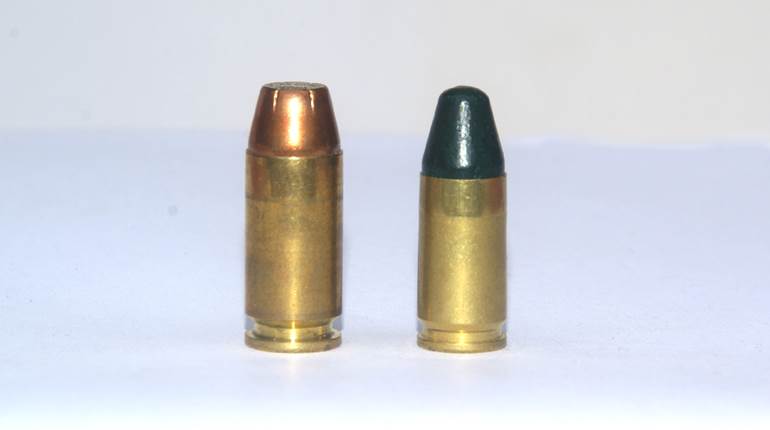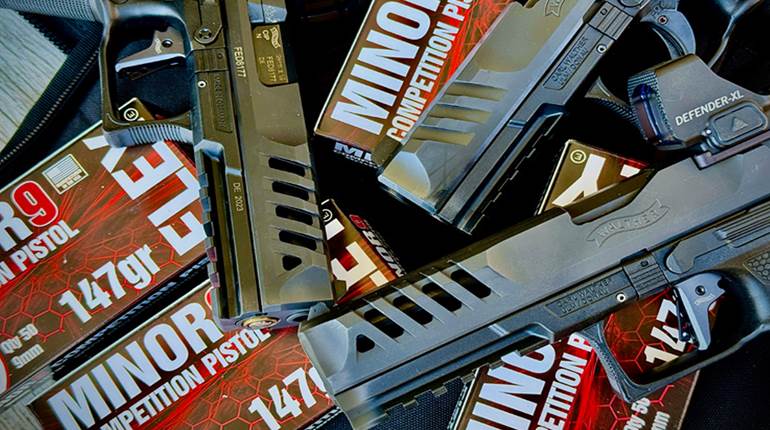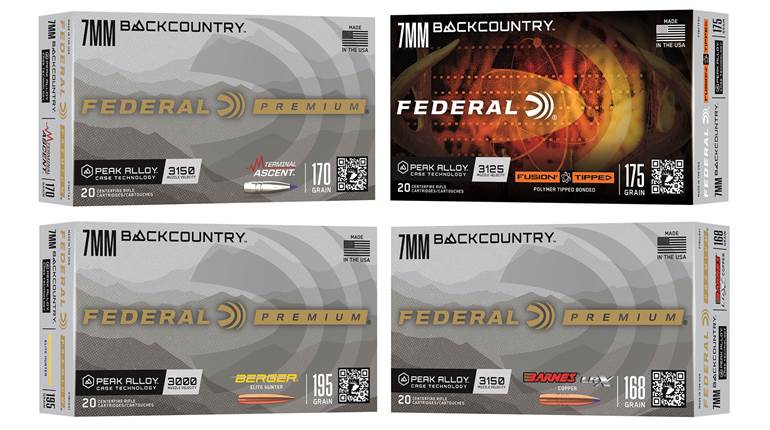
For centuries, bullets were nothing more than plain lead balls. These lead balls morphed into more efficient shapes as muzzleloading guns and paper cartridges continued to evolve. The tail end of the 19th century saw a massive jolt in small-arms innovations, not just with repeating action designs, but also with metallic cartridge casings and propellant development. Lead balls gave way to shaped slugs, which shifted into sleek and pointy bullets.
Following new cutting-edge propellants, gilded-metal jackets became necessary to protect the lead cores of projectiles from the increasing pressures and velocities never before seen. Exposed, pure lead is too soft and can smear and foul the bore, affecting not only accuracy but also reliability. As a result, ammunition makers across the globe either jacket or plate ammunition with thin layers of metals that were harder than lead—typically copper. In short, the goal was to project the bullet with a thin external material that was harder than lead but not harder than the steel in the gun’s bore.
The Legacy Of Lead
Even with the advancements in metallic cartridge technology, lead bullets never completely disappeared either, especially in handguns. Jacketed bullets are made of lead-wire cores inserted into copper cups and then sized. Copper-plated projectiles are made by dipping lead cores into a chemical bath to promote the growth of copper deposits on the outer surfaces by electro-chemical means. On the other hand, lead-alloy bullets are merely cast into molds and lubricated, much like the lead balls of old. Compared to jacketed or plated rounds, modern lubricated lead-alloy bullets are cheaper and do offer some protection against undue fouling and leading

A benefit of lead-alloy bullets is that they are typically cast just slightly wider than the bore’s diameter. The extra width creates a tight seal behind the bullet while also helping it to fully engage with the rifling. This can result in very high accuracy and good velocities. The downside is that loading lubricated lead bullets can be tedious and very messy. And when fired, they still produce more smoke and soot compared to their plated and jacketed counterparts. In spite of the accuracy and performance benefits, these types of lead bullets may not be ideal for high-volume, high-round count shooting applications or for handguns that make use of polygonal rifling.
Synthetic Jackets
In more recent history, some tinkering bullet-casters started applying polymer and resin-based coating compounds to their cast bullets. Powder coating is an industrial finishing process that consists of mixing various additives with polymer resins and pigments together into a dry flour-like powdery substance. This substance is applied to parts and then left to cure. The curing process bonds and hardens the powdered compounds to surfaces, and it’s simple enough that it can be done at home in a toaster oven. Other chemical compounds besides general powder coating are also used to protect projectiles. These include things like The Blue Bullet’s or Federal Syntech’s proprietary coatings, or the popular Hi-Tek coating used by many commercial and home-based casters. Regardless of the specific formula, all of these bullet coatings work along the same principles. In the context of small arms projectiles, these hardened-polymer and resin-based coatings work exactly like copper bullet jackets or plating.

The coated layer is thinner than copper jacketing, and it doesn’t suffer from some concentricity issues that can plague plated bullets. These ‘synthetic jackets’ function well both in pistol and moderate velocity rifle cartridges. Once properly cured, these polymer resin layers are strong enough to withstand the rigors and harshness of a gun’s bore including heat, pressure, friction and cutting from rifling. Bullets with these treatments have relatively thinner layers than equivalent plating or jacketing. In spite of the thinner layer, the synthetic coating is still flexible enough to handle like oversize lead-alloy bullets and their performance-increasing rifling engagement and gas sealing attributes. On top of that, synthetic coatings reduce internal friction, so shooters can expect slightly faster muzzle velocities and less heat compared to the same weight of jacketed, plated or lead bullet with the same powder charge. In short, coated bullets work just as well, if not better, than traditionally plated or jacketed bullets, but for a lower cost.
Economies Of Scale
Since the proof of concept gained acceptance, it didn’t take long for coated bullets to catch on. Overnight, they became the darlings of high-volume shooters, especially those who compete in action pistol shooting sports. In those disciplines, remaining competitive means firing tens of thousands of rounds in matches and practice sessions every season. Purchasing factory-loaded ammunition can become prohibitively expensive, even for professional shooters. And not to mention, these high-level shooters also tend to shoot ammunition loads tailored to their specialized competition firearms. Between managing costs and fulfilling their specific ammunition needs, reloading is a must for the majority of such competitors. Coated bullets are a given.

Several bullet companies sell coated bullets in all shapes, sizes and weights. A handful of these bullet companies such as SNS Casting, The Blue Bullets and Black Bullets International among others have gained large followings and have strong reputations. These companies not only cater to competitive and high-volume shooters, but in many cases are staffed by competitive shooters as well. In addition, many high-level champions have won several tournaments with coated handloads. Arguably, these victories cemented the reputation and validated synthetic jacket ammunition for shooting targets.
The Ultimate Proof
Federal Premium, one of the largest ammunition companies in the United States, is well aware of the benefits of coated bullets. In 2015, the company formally endorsed the concept by launching the Federal Syntech line. Several different calibers and bullet weights are available. Federal went beyond using synthetic coatings and turned this product line into a consistent and accurate go-to for target and competition shooters. Regardless of caliber, Syntech bullets are truncated with flat points, so they feed reliably while punching clean holes in paper targets, which makes them easier to score. These cartridges use lead-free “Catalyst” primers that reduce lead toxicity (something that indoor range shooters need to be careful with, especially). Syntech cartridges are loaded with frangible projectiles that minimize the chances of dangerous splash-back when shooting steel targets commonly found in action-pistol competitions, too. While buying loaded Federal Syntech factory ammo will obviously cost more than independently handloading coated bullets, these products do seem to fill a specific niche in the shooting market that isn’t fully covered by any other entity to the same extent at this time.

Synthetic Coating Limitations
Coated bullets typically smoke less than lubricated lead-alloy bullets, but they are not completely smoke-free like plated and jacketed rounds. Smokiness also depends on other factors, such as propellant selection, specific load data and barrel length. Coated bullets can generally cover the wide spectrum of pistol-round velocities, save for the most extreme applications such as very hot, +P+ pressure ammunition for compensated “race guns.” Depending on the specific circumstances and factors, synthetic coatings can get deposited on the baffles of compensators and create gunky messes that require additional cleaning. The formula of the specific coating compound itself too, will play a role. However, it is safe to say that for all the staple handgun chamberings like 9 mm Luger, .40 S&W, .45 ACP being fired at standard SAAMI-spec pressures and velocities, these coatings are fine.
The Takeaway
Along with red-dot sights and highly reliable, semi-automatic pistols, coated bullets should be counted as one of the many blessings afforded to the modern shooter. Their lower costs allow one to train, practice or compete and save a little money doing so. On the industry side of the gun counter, Federal has validated this alternative bullet technology across all levels with their Syntech line. And the Syntech product family keeps growing too: At the 2023 SHOT Show, for example, the company launched a new 135-grain 9 mm Luger load optimized for pistol-caliber carbines. Maybe it is a matter of time before another big name in ammunition starts down this colorful path.






































